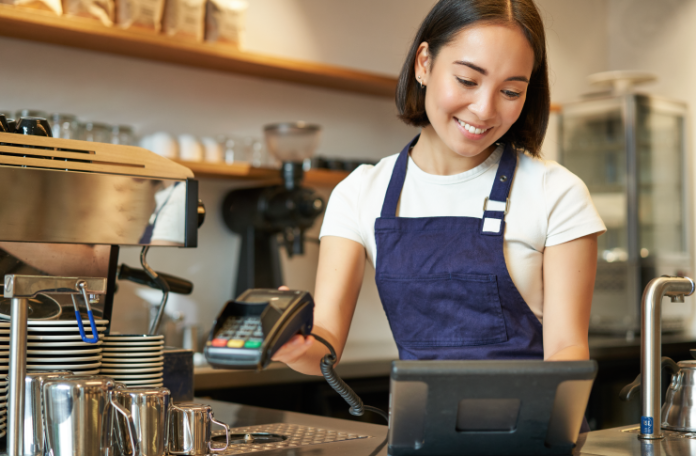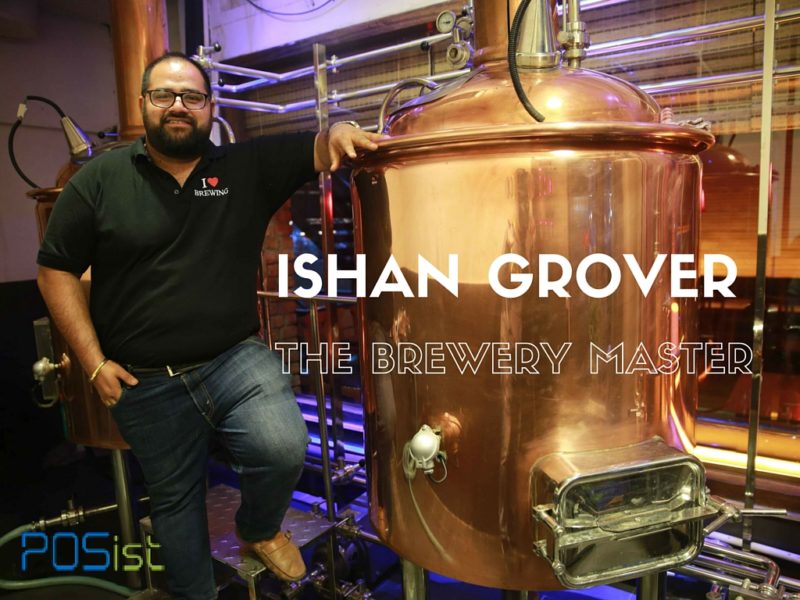Rapid development in the restaurant industry means restaurateurs must speed up operations to meet customers’ expectations while flawlessly managing operations. This is where a modern point of sale (POS) system comes into the picture. They have revolutionized how restaurants work.
For example, cashiers can enter a customer’s order straight into the device at the front of the house, and cooks can quickly receive the order via a POS. This saves time and streamlines communication. Additionally, POS measures employee performance, provides excellent customer service, and maintains accurate inventory to ensure your restaurant runs smoothly and profitably.
As the industry continues to learn about POS system benefits for restaurants — such as usability, feasibility, and efficiency — the global market for these terminals is growing. In fact, it is anticipated to increase from $20 billion in 2022 to $38 billion by 2030. Continue reading to know what this buzz is all about.
What is a POS System?
A POS system is an electronic device restaurants and retail stores use to monitor and execute transactions at the point of sale. It combines hardware and software components to enable the exchange of products or services in exchange for payment.
Businesses can use a POS system to automate functions like calculating totals, creating receipts, updating inventory levels, and delivering detailed sales statistics.
In recent years, POS systems have adopted cloud-based solutions, which store data on remote servers accessible over the internet. This provides centralized management for various store locations and gives businesses access to their sales and inventory information from virtually anywhere.
Benefits of a POS Software in Restaurant
A POS system helps restaurants keep track of their orders, manage inventory effectively, improve guest service, and simplify the overall transaction process. Here are some more benefits of employing a POS software in a restaurant:
Adapt to Cloud-Based Operations
Cloud-based POS systems can process transactions everywhere in the restaurant, indoors or outside, including the bar, patio, and main dining area. This saves guests time and ensures your staff provides the best possible experience to the guests, as opposed to having them queue up to pay.
Furthermore, these solutions are built to meet your demands and provide a quick workflow for your team — from accepting orders to managing payments to daily sales reporting and smart stock management.
Automate Accounting Reports
If you’ve worked in the restaurant business, you know that maintaining the accounting books is one of the most tedious parts. Without an integrated accounting software, you’re already spending too much time doing administrative tasks and not enough time running your business.
Fortunately, restaurant POS systems have reporting tools that enable you to monitor sales, earnings, and expenses, such as Cost of Goods Sold (COGS). These reports provide real-time data and are formatted with easy-to-read information.
You can access reports from anywhere with a cloud-based POS reporting system. This visibility into your business performance can assist you in identifying profitable areas of your firm and those that may require development.
This knowledge will enable you to make the required modifications to retain profitability and competitiveness.
Live Order Changes and Tracking
Outdated operating systems often used ticket printing to place orders in the kitchen. Although this is a rather effective way to communicate with your cooks, you can’t track the progress of the food being cooked or amend orders or modification requests using this method.
On the other hand, modern POS systems allow you to make changes straight from your POS gateway, eliminating the need for workers to return to the kitchen to manually adjust client requests or mistakes.
Increase Efficiency
Every restaurant is unique, with its own set of procedures, but a competent POS system will supplement the restaurant’s processes and staff functions. For example, different components of the same order should go to the right preparation counters and still be done simultaneously so that the customer doesn’t have to wait.
A POS program can also help you streamline operations and properly manage your restaurant floor layout. This guarantees that some waitstaff are not overburdened while others are underutilized. It can also deliver orders immediately to the kitchen, eliminating the need for manual entry and lowering the possibility of errors.
Moreover, a well-designed POS system saves your team time, resulting in greater customer service and profit margins. Importantly, user-friendly POS software guarantees that your team can process orders fast and properly, which aids in guest management.
Reduce Costs and Increase Customer Satisfaction
One of the major benefits of POS systems in restaurants is that they can help you save money on printing and paper by removing the need for paper menus. Allowing customers to place orders online can also reduce the labor costs of taking orders.
Furthermore, POS systems help boost customer satisfaction, cut costs, and boost productivity. You may lessen customer irritation and improve the eating experience by allowing them to place orders quickly and easily. You can also help guests make informed food choices by making menu items and prices easily accessible.
Also, guests will enjoy how easy it is to find information about their orders with an online POS system. Guests can place their order as soon as they are ready, rather than approaching a waiter or waitress if they require anything extra, ensuring that the overall level of customer care remains excellent throughout the dinner.
For instance, POSist enables Taco Bell to correctly estimate its stock requirements and place orders for raw materials. This decreases food waste and costs by a huge percentage. Additionally, operators can now predefine combo-meal options, which reduces order acceptance time by 6-7 seconds.
Loyalty programs
Discount schemes and loyalty programs are tried-and-tested strategies for attracting repeat customers, increasing sales, and expanding clientele — all of which contribute to business success. In fact, according to research, loyal recurring consumers spend 67% more than new customers.
With a loyalty program, your POS software can quickly determine which products your customers have purchased and assign a specific number of ‘loyalty points’ they can accumulate over time.
Even better, when these programs are linked to your POS software, they become exceedingly simple to deploy and produce long-term profits for your firm.
Once they have accumulated enough points, you can give them rewards according to their total amount or let them pick how to use their points. You can also tailor the offers based on the information in your CRM.
Furthermore, POS loyalty software also helps collect customer data, track client behavior, and identify purchasing trends. You can better understand your clients’ demands and enhance sales with precise customer data.
📚 Suggested Read: Restaurant Loyalty Programs: A Comprehensive Guide
Staff Management
Modern POS systems streamline staff management processes by allowing you to track staff hours and adjust and update the system while on the run. Some even include interfaces that allow you to create a task list and goals for your employees.
On top of that, POS systems with thorough employee reports are also the simplest approach to monitor performance so you can recognize and reward outstanding workers.
Anti-Theft Control
According to reports, employee theft costs US businesses $50 billion annually. Therefore, a cloud-based POS system with robust case management analytics is the first and most important step in avoiding such a costly incident.
Conclusion
There are various advantages of POS systems in a restaurant, making it very important to research before deciding. A comprehensive POS system must have all the features mentioned in this article and be easy to use.
Before investing in a POS system, you should consider additional aspects: the price, the integrations it offers, and the user interface.

















